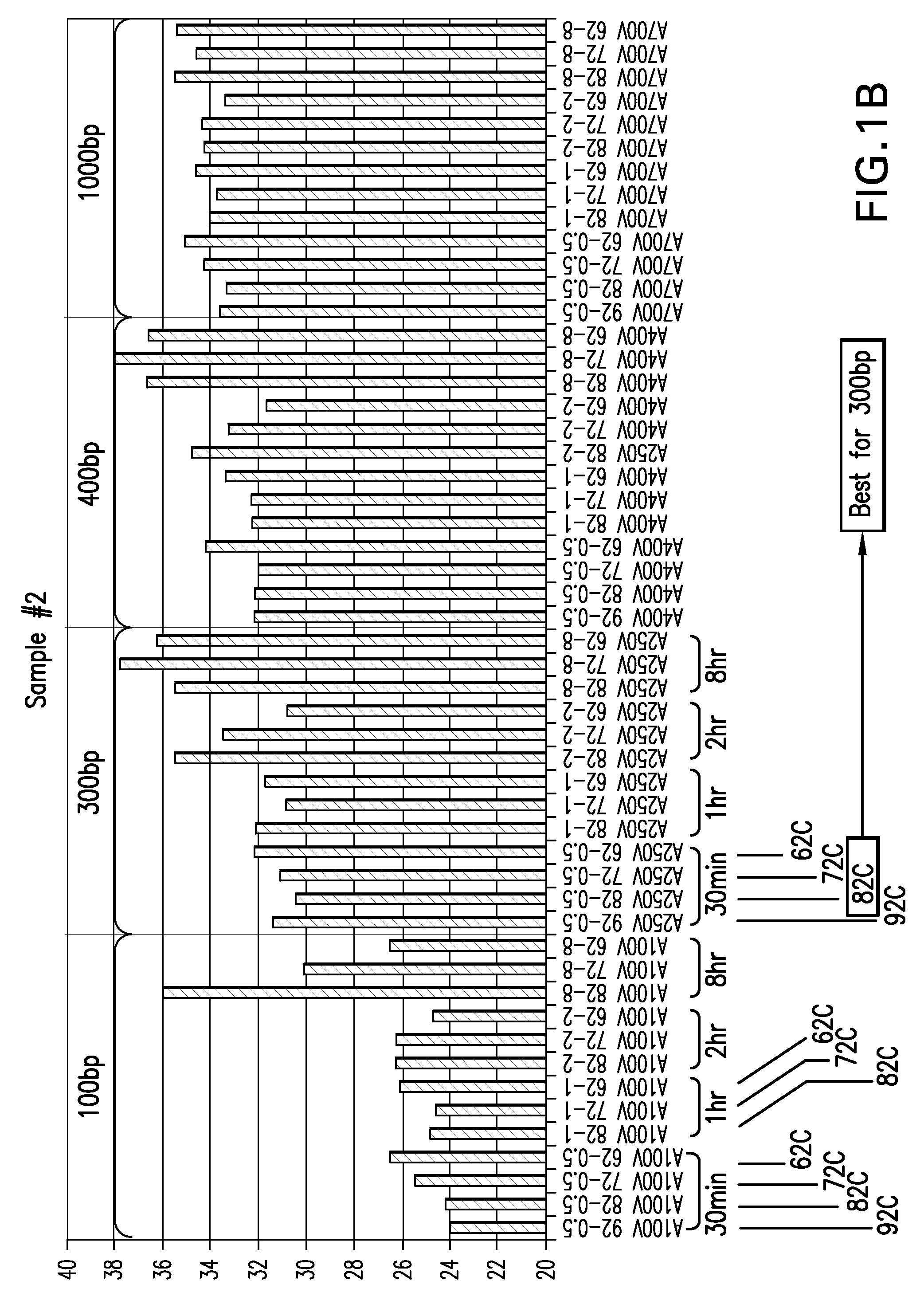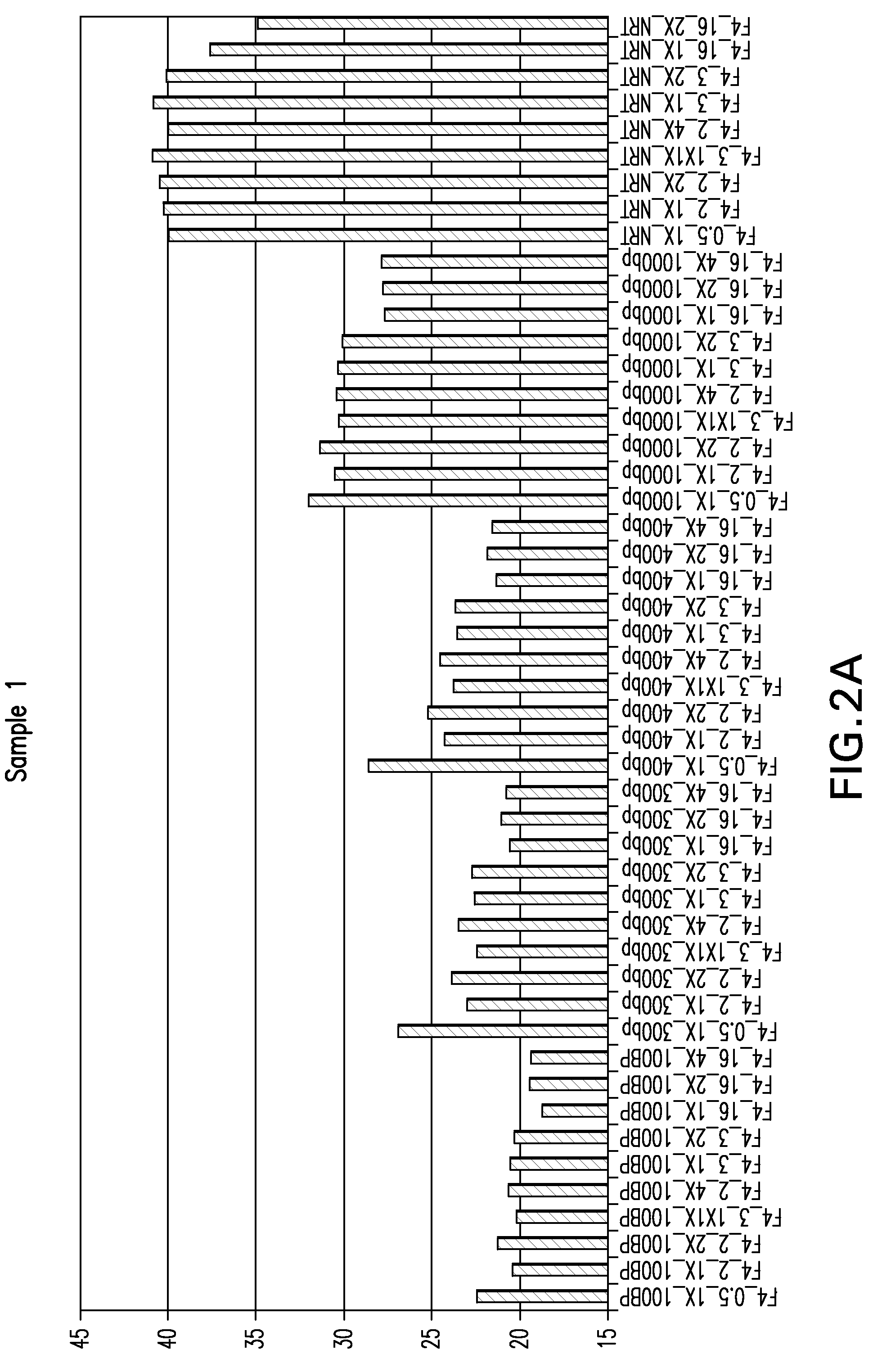Methods for isolating long fragment RNA from fixed samples
- Summary
- Abstract
- Description
- Claims
- Application Information
AI Technical Summary
Benefits of technology
Problems solved by technology
Method used
Image
Examples
example 1
Long-Fragment RNA Extraction Procedure
[0199]I. Tissue Preparation Standard laboratory procedures are used to mount a 10 micron section of a paraffin block containing a FFPE tissue on a glass slide without a cover slip. For deparaffinization and nuclear fast red (NFR) staining the slides are treated as follows:
[0200]The slides are washed twice in Xylene for 5 minutes, followed by ethanol (“EtoH”) washes. The slide is stained with NFR using standard laboratory procedures.
[0201]Areas of interest (e.g., tumor tissue or stromal tissue) are excised either manually or with a laser capture microdissector (depending on the size of the area to be excised).
[0202]II. RNA Extraction
[0203]An extraction solution is prepared containing Tris / HCL, EDTA, SDS and water. A tumor tissue is added to the extraction solution in a centrifuge tube and proteinase K. The sample is then heated at the appropriate temperature and time for the maximal yield of long fragment RNA. For example, the sample is heated at...
example 2
Method of Determining Length Distribution of Isolated RNA
[0206]To determine the relative amounts of various RNA fragment lengths isolated from FFPE tissues, the following strategy was used. RNA isolated from the FFPE specimens using the present invention and other known extraction methods was converted to cDNA using oligo dT primers. This means that only mRNA fragments containing a 3′-oligo A tail would be extended and converted to cDNA, thus providing a starting point from which to measure fragment length. PCR amplification of β-actin mRNA was used to represent the total population of mRNA. Primers were chosen to amplify approximately 100-120 bp segments of the β-actin gene representing locations 100, 300, 400 and 1000 bp from the 3′-end of the mRNA (FIG. 2). With this strategy, any difference in length-dependent efficiency of amplification would be minimized, as opposed to actually trying to amplify 100, 300, 400 and 1000 bp fragments. Thus the Ct of the PCR products of each of th...
example 3
Effects of Proteinase K
[0207]This example illustrates the effect of proteinase K concentration on RNA yield and DNA contamination. The proteinase K concentration was varied over a 4-fold range (5-20 μg, designated as 1×-4× in the figure) at incubation times of 0.5, 2, 3 and 16 hr. at 50° C. As seen in FIG. 4, 1× (5 μg) of proteinase K gives about a 2-fold (1 Ct) better RNA yield than higher amounts but more importantly, amounts of proteinase K greater than 1× give appreciably higher DNA contamination (2-3 Ct cycles). This experiment also illustrates the influence of incubation time on the amount of DNA extracted, which is from 3 to 7 Ct cycles greater at the 16 hr incubation time than at the shorter incubation times. DNA is detected in the extracts by performing the PCR without first doing a reverse transcription reaction to convert RNA to cDNA (the “no reverse transcription or NRT control”). This way, the only PCR amplification that occurs is of the co-extracted DNA, which if too h...
PUM
| Property | Measurement | Unit |
|---|---|---|
| Temperature | aaaaa | aaaaa |
| Temperature | aaaaa | aaaaa |
| Temperature | aaaaa | aaaaa |
Abstract
Description
Claims
Application Information
 Login to View More
Login to View More - R&D
- Intellectual Property
- Life Sciences
- Materials
- Tech Scout
- Unparalleled Data Quality
- Higher Quality Content
- 60% Fewer Hallucinations
Browse by: Latest US Patents, China's latest patents, Technical Efficacy Thesaurus, Application Domain, Technology Topic, Popular Technical Reports.
© 2025 PatSnap. All rights reserved.Legal|Privacy policy|Modern Slavery Act Transparency Statement|Sitemap|About US| Contact US: help@patsnap.com



